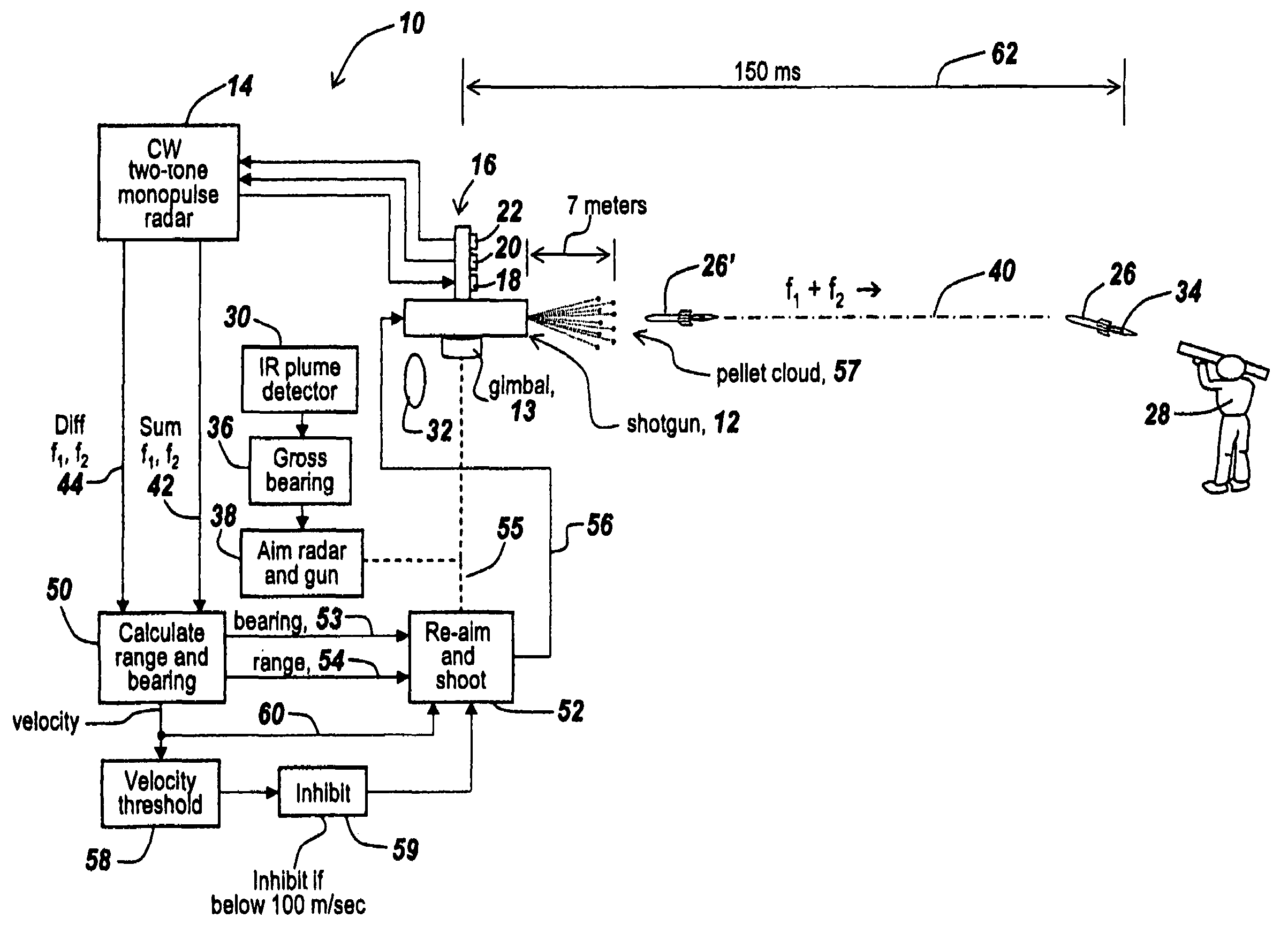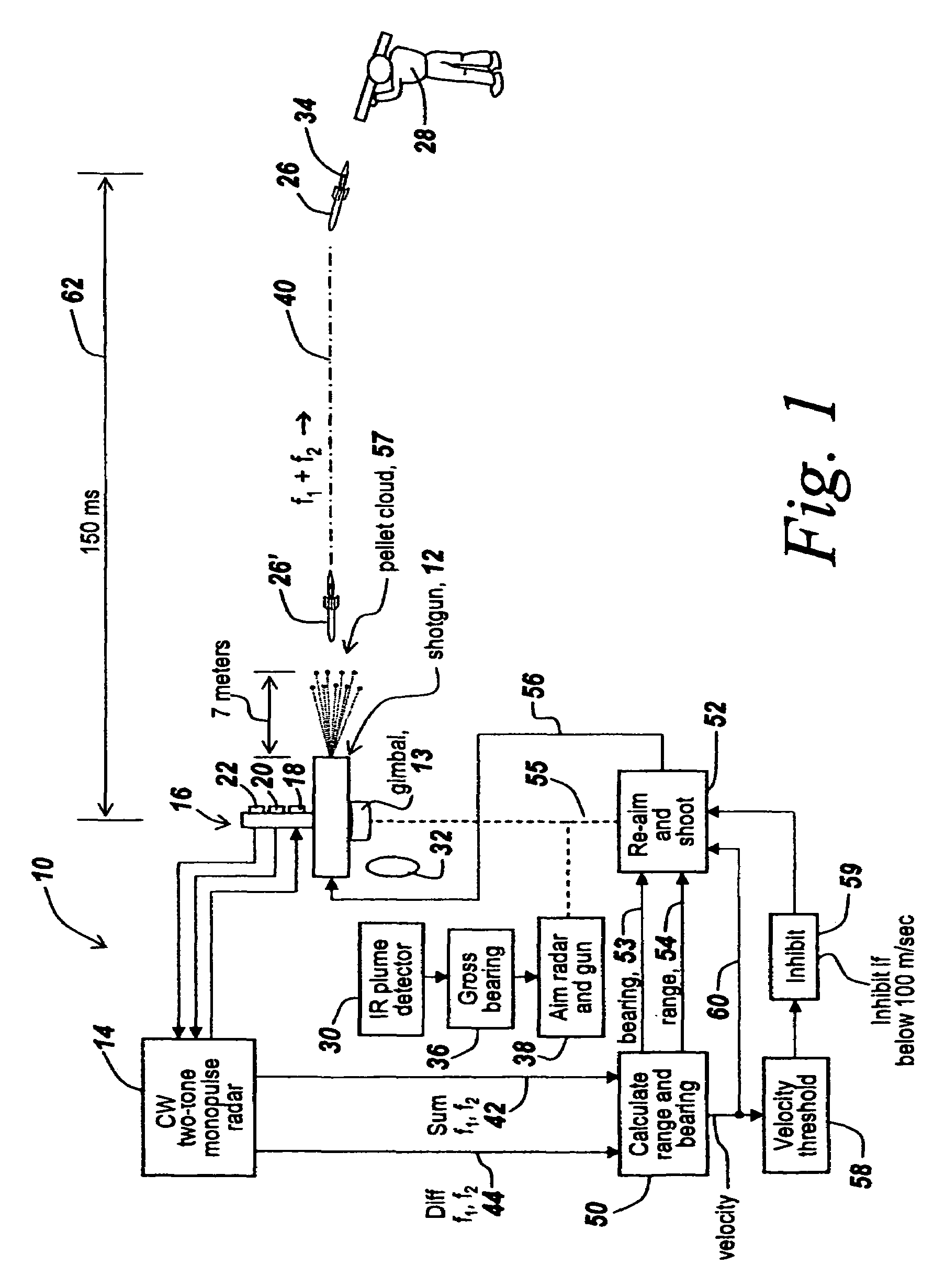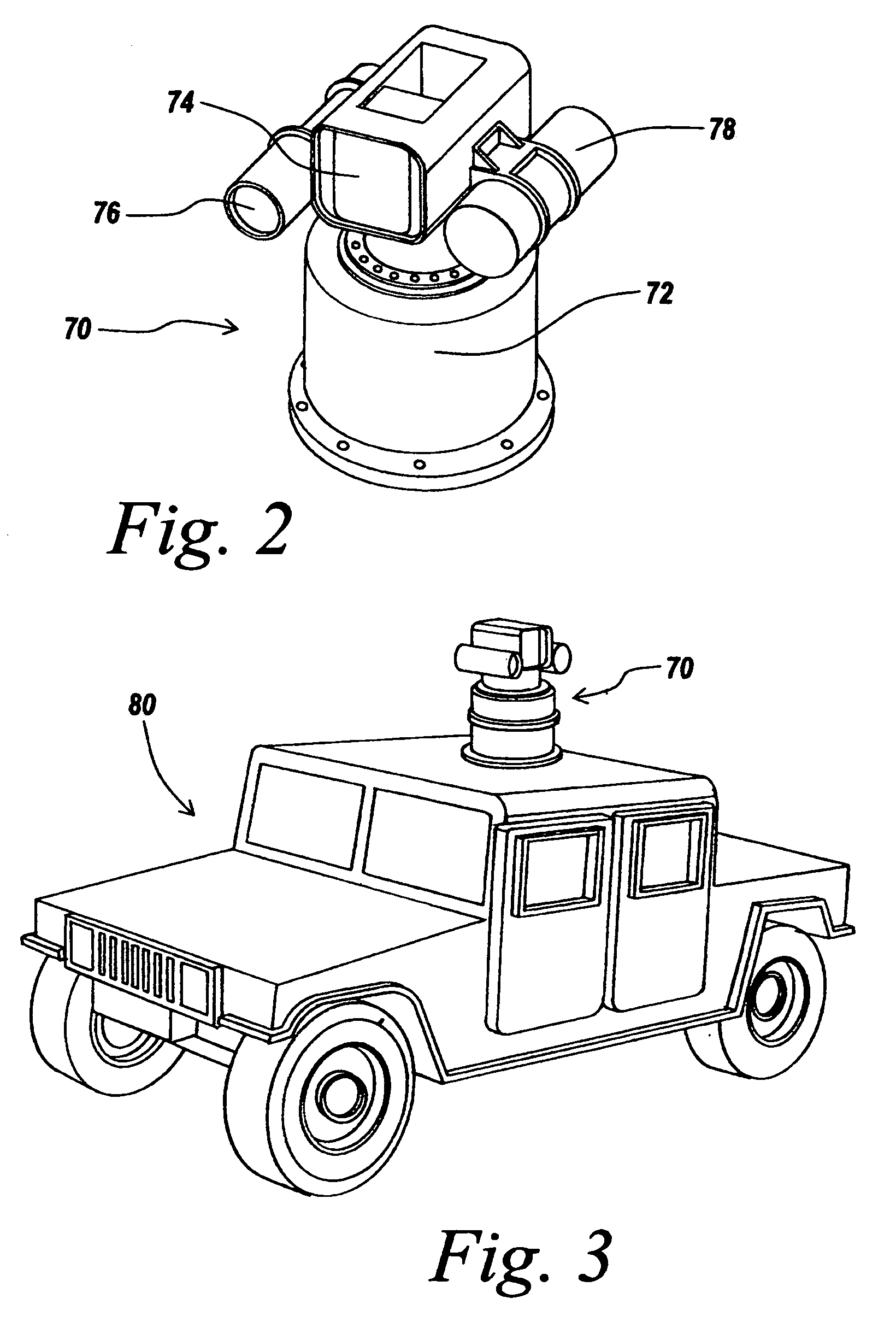Method and apparatus for improved determination of range and angle of arrival utilizing a two tone CW radar
a two-tone cw radar and range determination technology, applied in the field of continuous wave radar, can solve the problems of ineffective automatic method, inability to provide troops with effective automated method, and high cost of warning suites to deploy on every vehicle, so as to improve noise filtering, improve accuracy, and double the effect of measurement accuracy
- Summary
- Abstract
- Description
- Claims
- Application Information
AI Technical Summary
Benefits of technology
Problems solved by technology
Method used
Image
Examples
Embodiment Construction
[0048]The theory of two-tone continuous-wave range estimation shows that target range is proportional to the difference in complex phase angle between the signal returns corresponding to the two tones. The theory of monopulse angle of arrival estimation shows that the target monopulse ratio is given by the ratio of the amplitude of the Difference to Sum channels of a given frequency. As described above, in the prior art, estimates of range and monopulse ratio are derived separately.
[0049]In the subject invention, measurements from Sum and Difference channels for two frequencies are arranged into a matrix, singular value decomposition applied, and the complex phase angles needed for target range calculation and the amplitudes and phases needed for the angle of arrival calculation are extracted from the singular vectors corresponding to the maximum singular value. This approach provides an efficient and optimal method for combining a plurality of data streams.
[0050]As mentioned above,...
PUM
 Login to View More
Login to View More Abstract
Description
Claims
Application Information
 Login to View More
Login to View More - R&D
- Intellectual Property
- Life Sciences
- Materials
- Tech Scout
- Unparalleled Data Quality
- Higher Quality Content
- 60% Fewer Hallucinations
Browse by: Latest US Patents, China's latest patents, Technical Efficacy Thesaurus, Application Domain, Technology Topic, Popular Technical Reports.
© 2025 PatSnap. All rights reserved.Legal|Privacy policy|Modern Slavery Act Transparency Statement|Sitemap|About US| Contact US: help@patsnap.com



